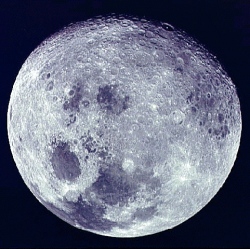
A new analysis of data from NASA’s Lunar Orbiter Laser Altimeter (LOLA) shows that the impact event that formed the Orientale basin on the Moon’s western edge and far side produced a sea of melted rock 220 miles across and at least six miles deep. Similar seas of impact melt were probably present at various times in at least 30 other large impact basins on the Moon.
As these melt seas cooled, they differentiated in a way that was similar to the lunar magma ocean. As a result, rocks formed in melt seas could be mistaken for “pristine” rocks formed very early in the Moon’s history, researchers say.
“This work adds the concept of impact melt magma seas to the lexicon of lunar rock-forming processes,” says planetary geologist James W. Head III, professor of geological sciences at Brown University and the senior researcher involved in the study. “It emphasizes that one must consider the detailed point of origin of the rocks in order to interpret them correctly.”
That includes rocks brought back during the Apollo program and Russia’s Luna missions. It’s quite possible, the researchers say, that impact melt material is present in lunar samples thought to be representative of the early formation of the lunar crust.
The amount of rock formed in melt seas is far from trivial. Vaughan and his colleagues estimate that impacts forming the Moon’s 30 large basins produced 100 million cubic kilometers of melt, enough to make up 5 percent of the Moon’s crust.
If lunar samples do include melt material, it would help to explain some puzzling findings from lunar samples. For example, in 2011 an analysis of a sample assumed to have originated in the early lunar crust suggested that the sample was 200 million years younger than the estimated time when the lunar magma ocean solidified.
That led some researchers to conclude either that the Moon is younger than previously estimated or that the lunar magma ocean theory was flawed. But if that sample actually originated from a melt sea, its young age could be explained without rewriting the history of the Moon.
